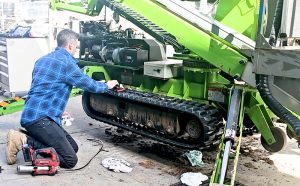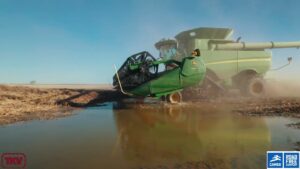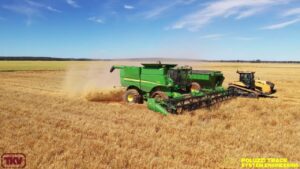To give you an understanding of the process behind the production of Rubber tracks and pads for excavators. Here are some definitions about rubber.
Virgin rubber?
This is a rubber compound created by using non-vulcanized rubber. It can be either synthetic or latex rubber. The vulcanization process is like frying an egg. It changes the physical structure of the compound. This is irreversible. In the current age of rising rubber costs and recycling of resources, it has become common to blend in recycled or reclaimed rubber into the compound. This can be appropriate in certain application, but disastrous in critical or high stress applications such as rubber tracks.
Reclaimed rubber?
Reclaimed rubber is a finely crumbed or ground rubber powder that is added into a rubber product. Normally to reduce cost. Often reclaimed rubber is obtained from recycling used tyres.
Latex rubber?
Also known as natural rubber produced from the sticky-white sap of the rubber tree. Latex rubber whilst providing superior flexibility, tensile strength, tear resistance and elongation to most synthetic compounds is quite expensive. It is still produced the same way it has been for many hundreds of years, scoring the bark of the tree and catching the resulting sap in a pail. A very labour intensive process.
Is synthetic rubber any good?
The true answer to this is – it depends. It depends upon what type of synthetic rubber and what application. For example if the application involves exposure to petroleum based oils, then latex rubber would disintegrate rapidly, a synthetic compound would need to be used.
Typically in mining or earthmoving applications such as OTR tyres or rubber tracks, the rubber compounds used are a blend of latex and synthetic rubbers to provide a balance between flexibility and wear resistance on one side and UV resistance, hardness, cost on the other.
Raw Synthetic Rubber
Why is rubber black?
The sap of the latex tree is white and when processed the resulting raw product becomes a muddy brown colour. Typically the raw synthetic material is white, grey or pale yellow in colour, then why is the finished vulcanized product mostly black? The answer is carbon. Carbon black powder is added to the blend prior to vulcanization. It serves as a reinforcing agent. This helps rubber be more heat resistant.
Why TKV for tracks?
TKV concentrates on quality. We don’t sell junk tracks. We only provide quality tracks. Our Tufftrac range lasts 3-5 times as long as our competitors.
See why our Tufftrac range lasts, see what we have for your machine on our parts finder, or contact us for a quote.


